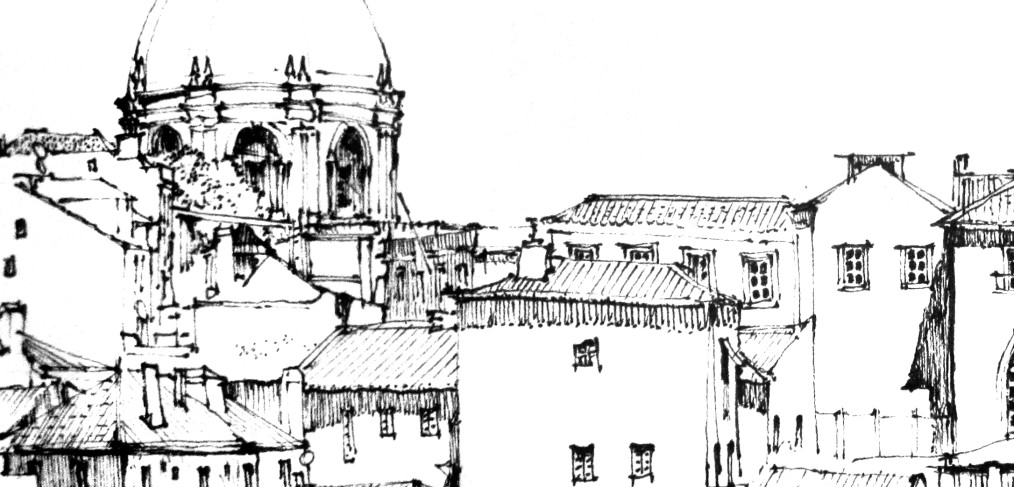
Lisbon: Between Permanence and Transformation
Author: Ana Patrícia Pires – Nuno Mendonça Raimundo
A city is undeniably made of the interactions of the many times that go past it. Overlaying new principles on old ones or simply adding to the existing, a city constructs itself slowly and in constant tension with itself. Its visage is as inspired by the site where it lays as it is by the shapes of its urban traces, its allotment systems and its constructions that successively sediment over each other. Those shapes, in turn, solidify themselves through each contribution that molds them and increasingly turns them into a deep-seated part of the image that the inhabitants have of their city.

View over Alfama, Lisbon (illustration by Nuno Mendonça Raimundo)
Therefore, it is important not to forget that the uses each time period considers relevant, as well as the values those periods assign to the many shapes of the city, will pass much like that very period itself. The naivety of considering any epoch more relevant than other past or future ones should therefore be avoided. Each period, ruled by its transitory principles, will contribute to a much larger process which exceeds it and that is, for the most part, independent of it.
The shapes which persist in the city manage it, precisely, through the many transformations undertook by those many periods, transformations that enrich and reaffirm the validity of those shapes. Occasional demolitions which aim at valuing a dense and ancient urban fabric as well as additions that are informed by the persisting references that surround them are principles of actions to take into account in each intervention that wants to be a contribution for the permanence of the city and of its image. Thus, only a careful analysis of the existing and of the already missing shapes enables the consolidation of a set of design intentions which otherwise, one could argue, would be disconnected from its context.
It is informed by this group of ideas that this edition on Lisbon proposes alternative takes on how to intervene in the consolidated historical city. Lisbon has recently seen a touristic boom which put it in the spotlight of travelers and investors alike and, over the past five years, its historical center has turned from a deserted and rundown area to a bustling hub of tourists, hotels, shops and activities, which have in turn spawned multiple urban and architectural renovation undertakings. We believe the projects featured in this edition illustrate the academia’s effort in coming up with suitable answers to the challenges this sudden transformation poses to the city and its inhabitants, and to the dangers it may represent to the sustainability of a unique urban culture. This is achieved not only by valuing every time period which helped shape Lisbon, in one way or another, but also by rehabilitating those cultural traces that all the Portuguese share, and avoiding the unfit solutions that the haste of renovation is unfortunately disseminating.
The main goal of any intervention in the urban context should be the coexistence of distinct spaces – those spaces which persevere and are constitutive of the city’s image, and enable many generations of inhabitants and visitors alike not only to peek into the past but also to consolidate their cultural identity. As Aldo Rossi says beautifully in his book The architecture of the city, “the union between past and future is present in the very idea of a city, running through it as memory runs through a person’s life.”




